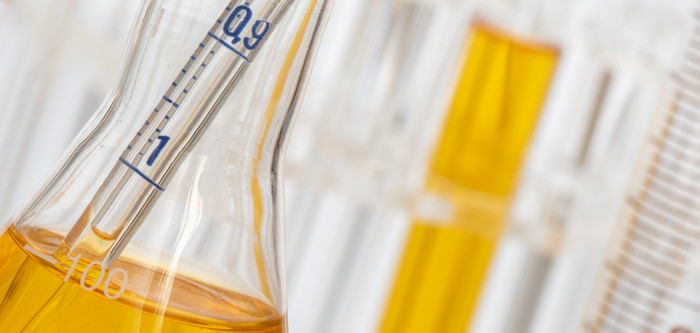Seminal fluid and doping analysis
Can a transfer of human seminal fluid trigger a doping offense in sports drug testing?

New Publication
16th Oct 2024
Breuer J, Garzinsky AM, Thomas A, Kliesch S, Nieschlag E, Wenzel F, Georgas E, Geyer H, Thevis M.
Investigations into the Concentrations and Metabolite Profiles of Doping Agents and Antidepressants in Human Seminal Fluid Using Liquid Chromatography-Mass Spectrometry.
Drug Metab Dispos. 2024 Oct 16;52(11):1313-1322.
ABSTRACT
Exogenous substances, including drugs and chemicals, can transfer into human seminal fluid and influence male fertility and reproduction. In addition, substances relevant in the context of sports drug testing programs, can be transferred into the urine of a female athlete (after unprotected sexual intercourse) and trigger a so-called adverse analytical finding. Here, the question arises as to whether it is possible to distinguish analytically between intentional doping offenses and unintentional contamination of urine by seminal fluid. To this end, 480 seminal fluids from nonathletes were analyzed to identify concentration ranges and metabolite profiles of therapeutic drugs that are also classified as doping agents. Therefore, a screening procedure was developed using liquid chromatography connected to a triple quadrupole mass spectrometer, and suspect samples (i.e., samples indicating the presence of relevant compounds) were further subjected to liquid chromatography-high-resolution accurate mass (tandem) mass spectrometry. The screening method yielded 90 findings (including aromatase inhibitors, selective estrogen receptor modulators, diuretics, stimulants, glucocorticoids, beta-blockers, antidepressants, and the nonapproved proliferator-activated receptor delta agonist GW1516) in a total of 81 samples, with 91% of these suspected cases being verified by the confirmation method. In addition to the intact drug, phase-I and -II metabolites were also occasionally observed in the seminal fluid. This study demonstrated that various drugs including those categorized as doping agents partition into seminal fluid. Monitoring substances and metabolites may contribute to a better understanding of the distribution and metabolism of exogenous substances in seminal fluid that may be responsible for the impairment of male fertility.
SIGNIFICANCE STATEMENT
This study demonstrates that doping agents as well as clinically relevant substances are transferred/eliminated into seminal fluid to a substantial extent and that knowledge about drug levels (and potential consequences for the male fertility and female exposure) is limited. The herein generated new dataset provides new insights into an important and yet little explored area of drug deposition and elimination, and hereby a basis for the assessment of contamination cases by seminal fluid in sports drug testing.